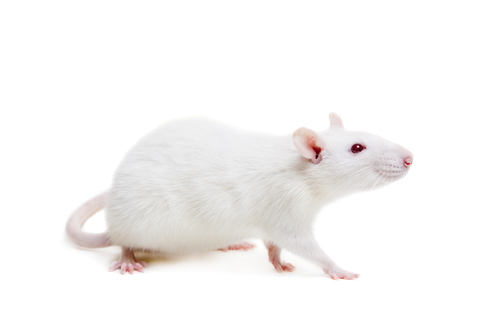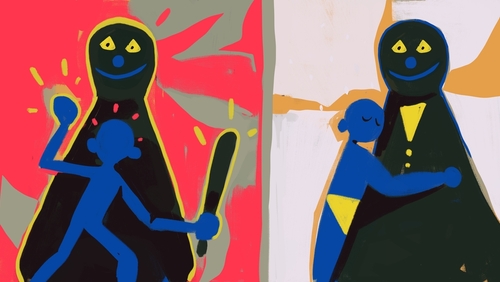
Experimental psychology and psychological experiments can be key to understanding what makes people tick. Cognitive dissonance, false consensus effect, and classical conditioning are important parts of psychological experiments. However, some individuals have gone about their research and famous psychology experiments in rather unusual, and sometimes morally dubious, ways. These researchers’ findings may increase the sum of knowledge on human behavior; however, the methods that a number of psychologists have used in order to test theories have at times overstepped ethical boundaries. Some might even appear somewhat sadistic. Those taking part in such studies have not always escaped unscathed. In fact, as a result some have suffered lasting emotional damage, or worse. Here are ten bizarre psychology experiments that totally crossed the line.
10. Milgram Experiment (1961)

The Milgram Experiment is one of the controversial experiments. Yale University social psychology professor Stanley Milgram embarked on his now infamous series of experiments in 1961. Prompted by the trial of high-ranking Nazi and Holocaust-coordinator Adolf Eichmann, Milgram wished to assess whether people really would carry out acts that clashed with their conscience if so directed by an authority figure. For each test, Milgram lined up three people, who were split into the roles of “experimenter” (or authority figure), “teacher” and “learner” (actually an actor). After that, the teacher was separated from the learner. They were then told to comply with the experimenter. The teacher would attempt to tutor the learner in sets of word pairs. The penalty for wrong answers by the learner was shocking in more ways than one. The learner pretended to receive painful and increasingly strong jolts of electricity that the teacher thought they were delivering. Even though no real shocks were inflicted, the ethics of the experiment came under close scrutiny owing to the severe psychological stress placed on its volunteer subjects.
9. Little Albert Experiment (1920)

The Little Albert Experiment is one of the psychological experiments gone wrong. Things were different in 1920. Back then, you could take a healthy baby and scare it silly in the name of science. That is exactly what American social psychologist John B. Watson did at Johns Hopkins University. Watson was interested to learn if he would be able to condition a child to fear something ordinary. He coupled it with something else that he supposed triggered inborn fear. Watson borrowed eight-month-old baby Albert for an unethical psychological experiment. First, Watson introduced the child to a white rat. Observing that it didn’t scare Albert, Watson then reintroduced the rat, only this time together with a sudden loud noise. Naturally, the noise frightened Albert. Watson then deliberately got Albert to associate the rat with the noise, until the baby couldn’t even see the rat without bursting into tears. Essentially, the psychologist gave Albert a pretty unpleasant phobia. Moreover, Watson went on to make the infant distressed when seeing a rabbit, a dog, and even the furry white beard of Santa Claus. By the end of the experiment, Albert might well have been traumatized for life!
8. Stanford Prison Experiment (1971)

In August 1971 Stanford University psychology professor Philip Zimbardo decided to test the theory that conflict and ill-treatment involving prisoners and prison guards is chiefly down to individuals’ personality traits. This experiment came to be known as the Stanford Prison Experiment. Zimbardo and his team set up a simulated prison in the Stanford psychology building and gave 24 volunteers the roles of either prisoner or guard. The participants were then dressed according to their assigned roles. Zimbardo gave himself the part of superintendent. While Zimbardo had steered the guards towards creating “a sense of powerlessness” among the mock prisoners, what happened was pretty disturbing. Around four of the dozen prison guards became actively sadistic. Prisoners were stripped and humiliated, left in unsanitary conditions and forced to sleep on concrete floors. One was shut in a cupboard. Zimbardo himself was so immersed in his role that he did not notice the severity of what was going on. After six days, his girlfriend’s protests persuaded him to halt the experiment; but, that was not before at least five of the prisoners had suffered emotional trauma.
7. Monkey Drug Trials (1969)

The Monkey Drug Trials is a psychology experiment gone wrong. While their findings may have shed light on the psychological aspect of drug addiction, three researchers at the University of Michigan Medical School arguably completely overstepped the mark in 1969 by getting macaque monkeys hooked on illegal substances. G.A. Deneau, T. Yanagita and M.H. Seevers injected the primates with drugs. These drugs included cocaine, amphetamines, morphine, LSD, and alcohol. Why? In order to see if the animals would then go on to freely administer doses of the psychoactive and, in some cases, potentially deadly substances themselves. Many of the monkeys did, which the researchers claimed established a link between drug abuse and psychological dependence. Still, given the fact that the conclusions cannot necessarily be applied to humans, the experiment may have had questionable scientific value. Moreover, even if a link was determined, the method was quite possibly unethical and undoubtedly cruel, especially since some of the monkeys became a danger to themselves and died.
6. Bobo Doll Experiment (1961, 1963)

In the early 1960s, Stanford University psychologist Albert Bandura attempted to demonstrate that human behavior can be learned through observation of reward and punishment. To do this, he acquired 72 nursery-age children together with a large, inflatable toy known as a Bobo doll. He then made a subset of the children watch an aggressive model of behavior. An adult violently beat and verbally abused the toy for around ten minutes. Alarmingly, Bandura found that out of the two-dozen children who witnessed this display, in many cases the behavior was imitated. Left alone in the room with the Bobo doll once the adult had gone, the children exposed to the violence became verbally and physically aggressive towards the doll, attacking it with an intensity arguably frightening to see in ones so young. In 1963 Bandura carried out another Bobo doll experiment that yielded similar results. Nevertheless, the psychology research has since come under fire on ethical grounds, seeing as its subjects were basically trained to act aggressively with possible longer-term consequences and not healthy childhood development.
5. Homosexual Aversion Therapy (1967)
Aversion therapy to “cure” homosexuality was once a prominent subject of research at various universities. A study detailing attempts at “treating” one group of 43 homosexual men was published in the British Medical Journal in 1967. The study recounted researchers M.J. MacCulloch and M.P. Feldman’s experiments in aversion therapy at Manchester, U.K.’s Crumpsall Hospital. The participants watched slides of men that they were told to keep looking at for as long as they considered it appealing. After eight seconds of such a slide being shown, however, the test subjects were given an electric shock. Slides showing women were also presented, and the volunteers were able to look at them without any punishment involved. Although the researchers suggested that the trials had some success in “curing” their participants, in 1994 the American Psychological Association deemed homosexual aversion therapy dangerous and ineffective.
4. The Third Wave (1967)
“How was the Holocaust allowed to happen?” It’s one of history’s burning questions. And when Ron Jones, a teacher at Palo Alto’s Cubberley High School, was struggling to answer it for his sophomore students in 1967, he resolved to show them instead. On the first day of his social experiment, Jones created an authoritarian atmosphere in his class, positioning himself as a sort of World War II-style supreme leader. But as the week progressed, Jones’ one-man brand of fascism turned into a school-wide club. Students came up with their own insignia and adopted a Nazi-like salute. They were taught to firmly obey Jones’ commands and become anti-democratic to the core, even “informing” on one another. Jones’ new ideology was dubbed “The Third Wave” and spread like wildfire. By the fourth day, the teacher was concerned that the movement he had unleashed was getting out of hand. He brought the experiment to a halt. On the fifth day, he told the students that they had invoked a similar feeling of supremacy to that of the German people under the Nazi regime. Thankfully, there were no repercussions.
3. UCLA Schizophrenia Medication Experiment (1983–1994)
UCLA Schizophrenia Medication Experiment is another of the famous psychological studies. From 1983 psychologist Keith H. Nuechterlein and psychiatrist Michael Gitlin from the UCLA Medical Center commenced a now controversial study into the mental processes of schizophrenia. Specifically, they were looking into the ways in which sufferers of the mental disorder relapse. They were trying to find out if there are any predictors of psychosis. To achieve this, they had schizophrenics, from a group of hundreds involved in the program, taken off their medication. Such medication is not without its nasty side effect. The research may hold important findings about the condition. Nevertheless, the experiment has been criticized for not sufficiently protecting the patients in the event of schizophrenic symptoms returning; nor did it clearly determine the point at which the patients should be treated again. What is more, this had tragic consequences in 1991 when former program participant Antonio Lamadrid killed himself by jumping from nine floors up despite having been open about his suicidal state of mind and supposedly under the study’s watch.
2. The Monster Study (1939)
Appropriately branded the “Monster Study” by its contemporaries, psychologist Dr. Wendell Johnson’s speech therapy experiment was at first kept a secret in case it damaged his professional reputation. It is now one of the famous experiments. The University of Iowa’s Johnson drafted in graduate student Mary Tudor to carry out the 1939 experiment for her master’s thesis, whilst Johnson himself supervised. Twenty-two orphaned children, ten of whom had issues with stuttering, were put into two groups, each containing a mix of those with and without speech disorders. One of the two groups was given positive, encouraging feedback about their verbal communication, while the other was utterly disparaged for their (sometimes-non-existent) speech problems. The findings were recorded. This six-month study had a major impact on the human subjects. It even had impact on those who had no prior talking difficulties, making some insecure and withdrawn. In 2007 half a dozen of the former subjects were given a large payout by the state of Iowa for what they had endured, with the claimants reporting “lifelong psychological and emotional scars.”
1. David Reimer (1967–1977)
Canadian David Reimer’s life was changed drastically on account of one Johns Hopkins University professor and one of these famous psychology studies. After a botched circumcision procedure left Reimer with disfiguring genital damage at six months old, his parents took him to be seen by John Money. Money was a professor of medical psychology and pediatrics who advocated the theory of gender neutrality. He argued that gender identity is first and foremost learned socially from a young age. Money suggested that although Reiner’s penis could not be repaired, he could and should undergo sex reassignment surgery and be raised as a female. In 1967 Reimer began the treatment that would turn him into “Brenda.” However, despite further visits to Money over the next ten years, Reimer was never really able to identify himself as female and lived as a male from the age of 14. He would go on to have treatment to undo the sex reassignment, but the ongoing experiment had prompted extreme depression in him – an underlying factor that contributed to his 2004 suicide. John Money, meanwhile, was mired in controversy.
Conclusion
These shocking psychological experiments were quite bizarre and damaging. Psychological research studies examine possible cause-and-effect relationships between variables. Experimental research involves careful manipulation of one variable (the independent variable) and measuring changes in another variable (the dependent variable). The most simple experimental design uses a control group and an experimental group. The experimental group experiences whatever treatment or condition that’s under investigation while the control group does not. Even with these guidelines followed, we can see that ethics still needs to be part of interesting psychology studies as well.
Related Resources:
- 20 Famous People with Schizophrenia
- Ranking Top 25 Graduate Programs in Experimental Psychology
- What Are The Best Experimental Psychology Programs in the Country?
- Tips For Designing Psychology Experiments
- What Are The Top 10 Unethical Psychology Experiments?
- The Most Groundbreaking Psychology Experiments of All Time
